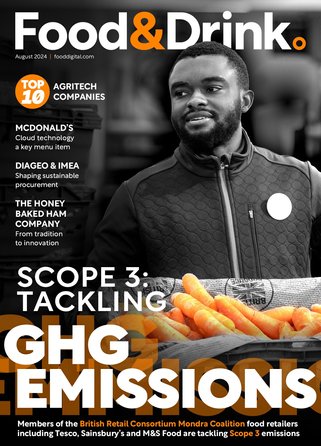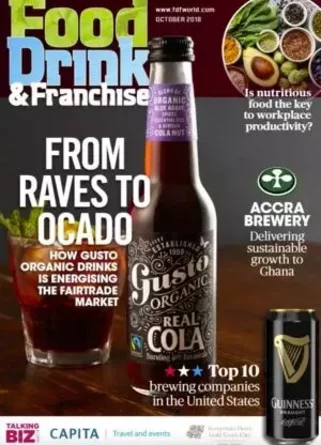Barcode’s 50th Anniversary: Transforming Food Supply Chain

The humble barcode recently marked its 50th anniversary, and what began as a means to organise and regulate high street retail supply chains has gone on to also shape the food sector.
The journey of barcodes in the food sector began with the introduction of the Universal Product Code (UPC) in 1974 by GS1 US, a not-for-profit information standards organisation.
GS1 US helps its members implement global supply chain standards for unique identification, data capture and data sharing between trading partners.
The first item scanned was a 10-pack of Wrigley's chewing gum, and it began an era of retail and supply chain automation. In 1976, the original 12-digit code was expanded to 13 digits, which allowed the identification system to be used outside the US.
Initially adopted by grocery stores for faster checkout processes, barcodes quickly proved their worth beyond the cash register. As technology advanced, so did barcode capabilities, evolving from simple linear codes to sophisticated 2D variants like QR codes.
Today, the barcode is used to identify over 1 billion products and is scanned more than 10 billion times daily, and serves as a cornerstone of global commerce.
How barcodes have improved the food industry
While barcodes are ubiquitous across the food industry, several companies stand out for their innovative applications:
Walmart: The retail giant has been at the forefront of barcode adoption, using the technology to optimise its vast supply chain and inventory management systems.
Nestlé: Leverages barcodes for quality control and traceability across its diverse product range.
Coca-Cola: Utilises barcodes for tracking distribution and implementing targeted marketing campaigns.
Barcodes revolutionise inventory management by enabling real-time stock tracking, minimising overstocking and stockouts. They facilitate farm-to-fork traceability, bolstering food safety and streamlining recall processes.
- Inventory Management
- Supply Chain Transparency
- Cost Reduction
- Customer Insights
- Food Safety
By automating data entry, barcodes reduce human error and labour costs while gathering valuable consumer insights. Crucially, they aid in monitoring expiration dates and lot numbers, essential for perishable goods management.
This technology thus drives efficiency, safety, and informed decision-making across the food supply chain.
How GS1 standards have helped transform the food supply chain
GS1 Standards of barcodes provide a universal framework for business operations, enabling precise identification and seamless sharing of critical information across industries.
These standards address key supply chain challenges faced by retailers through: standardised identifiers for locations (GLNs) and products (GTINs), global data synchronisation network for product data sharing, unique device identification for medical equipment and advanced tracking and traceability measures.
Moreover, GS1 standards are instrumental in verifying sustainability claims, meeting consumer demands for transparency, and the adoption of 2D barcodes in the food sector has particularly enhanced consumer engagement, brand information dissemination, and back-office efficiency.
Retailers are also demonstrating their support for 2D barcodes.
Dave DeLaus, senior vice president and chief information officer, Wegmans Food Markets, Inc., says: “In addition to the shopper engagement opportunities that 2D barcodes provide, these data-rich QR codes will also better support our inventory management operations so that we can keep our shelves stocked with the products our customers want most”.
“As an early adopter, we’re prioritising this industry transition and are pressure-testing our capabilities to ensure readiness", he continues.
Mike Stigers, president of Wakefern Food Corp., the largest retailer-owned cooperative says: “It’s so exciting to mark 50 years of progress with the ‘Scanniversary’ and, as a GS1 US board member, help guide the industry’s transition to 2D barcodes. The potential to provide so much important product information will continue to help retailers, manufacturers and consumers.”
--------------
Make sure you check out the latest news at Food Digital, a BizClik brand.




